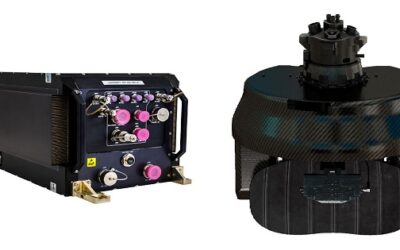Air Force Association’s 2018 Air, Space & Cyber Conference
Lockheed Martin is quickly and deliberately diversifying its space portfolio. During a 18 September luncheon briefing attended by MONCh, Kay Sears, Vice President of Strategy and Business Development for Lockheed Martin Space Systems, provided a strategic overview of the company’s business model.
Lockheed Martin’s strategy is in response to the evolving market place, with both military and commercial customers seeking more choices in satellite size and orbit, and accordingly has rolled out a new family of satellite buses that consolidate the customized spacecraft the company has previously developed.
On the small end of Lockheed Martin’s new lineup is the LM 50 series of flexible nano-satellite (nanosat) buses. Weighing 10-100kg [22-220lbs], the spacecraft are being developed with Terran Orbital, which, Sears said, offers advanced nanosat technology and operational experience that Lockheed lacks. This June, Lockheed Martin Ventures announced its, “strategic investment,” in Terran Orbital, a nanosatellite manufacturer.
Of note, this OEM’s renewed focus on the “small” technology market coincides with Boeing’s acquisition of Millennium Space Systems, a provider of agile, flight-proven small-satellite solutions, referred to in a recent article published on this web site https://www.monch.com/mpg/news/space/4160-boeingsat.html.
While offering larger buses for mid-sized (275 and 2,200 kg) and large (up to 2,300 kg) missions, the industry expert further revealed Lockheed Martin is banking on the development of common components for satellite buses, ranging in size from several centimeters to more than nine meters, to deliver on orders more cheaply and quickly. This is the first time, all of Lockheed’s satellite buses will share common components, with more than 280 having been identified in an effort to create a lineup of satellite buses.
“There are benefits to commonality,” she said, noting the satellites will be built more inexpensively, quickly and reliably. The commonality technology thrust is a strategy MONCh has heard in other Lockheed Martin programmes, from the three variants of F-35 to the spiral development of various weapon systems.
Lockheed Martin is also strengthening other technology underpinnings of its manufacturing processes, including 3-D printing, Sears said, permitting Lockheed to, “deliver the satellite as quickly as 24 months after an order is placed.”
Shifting the focus to future programmes, it was reinforced that prior to this conference convening, the US Air Force awarded Lockheed Martin a contract to build the next 22 generation GPS III (follow on) satellites for the military. The next tranche of GPS III satellites will have 100% digital navigation payload, regional military protection and new search and rescue payloads. As significant, the company remains under a previous contract, to construct 10 GPS III satellites for the US Air Force. And concurrently, a new ground system for the satellites, known as the Operational Control System, (OCX system), which will manage the old and new GPS orbiters and their data, is being built by Raytheon.
Marty Kauchak

























